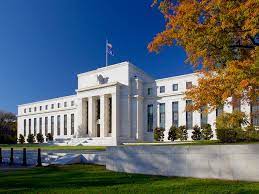Investment Strategies
Fed's Powell Hints At Rate Cuts – Wealth Managers' Reactions

As the US administration continues its tussle with the US Federal Reserve over the path of monetary policy, the central bank chair set out what was taken to be a mildly dovish turn on rates just before the weekend.
Late last week, Federal Reserve Chair Jerome Powell hinted of possible interest rate cuts. Powell, who has been under pressure from the Trump administration to cut rates, gave a widely-anticipated speech at the US central bank’s annual gathering in Jackson Hole, Wyoming.
Powell referred to “sweeping changes” in tax, trade and immigration policies. The result is that “the balance of risks appear to be shifting” between the Fed’s twin goals of full employment and stable prices. On interest rates, Powell said: "With policy in restrictive territory, the baseline outlook and the shifting balance of risks may warrant adjusting our policy stance. Monetary policy is not on a preset course. FOMC (Federal Open Market Committee) members will make these decisions, based solely on their assessment of the data and its implications for the economic outlook and the balance of risks."
As far as the domestic economy is concerned, he said: "In terms of the Fed's dual-mandate goals, the labor market remains near maximum employment, and inflation, though still somewhat elevated, has come down a great deal from its post-pandemic highs. At the same time, the balance of risks appears to be shifting."
After the weekend, Fed-watchers had to digest how President Donald Trump has tried to oust Fed governor Lisa Cook over alleged mortgage document falsification, but she says he lacks authority to fire her, and she won’t quit. Trump is seen as trying to exert more power over the central bank, which has implications for the reputation of US monetary policy and the standing of the dollar.
Here are some reactions from wealth managers and other financial organizations.
The Global CIO Office
The Fed funds target range of 4.25 to 4.5 per cent is hardly
punitive. Powell reminded [us] that this is not far from the
70-year average of 4.3 per cent. He also suggested that the
neutral rate has drifted higher post-pandemic, reflecting
demographics, productivity trends, and – crucially – persistent
fiscal deficits. Markets, however, heard the word “cuts”
and took it at face value.
Nevertheless, while equities surged, the dollar eased modestly, and traders priced in a 25 to 50-basis-point reduction in interest rates by September. But the exuberance is precarious, in our view. Powell was at pains to stress caution: the Fed remains data-dependent, inflation risks remain unresolved, and the easing cycle is neither automatic nor guaranteed. In other words, markets are running ahead of themselves. We still have a cycle of labor market and inflation data before the next Fed meeting.
Laura Cooper, head of macro credit and global investment
strategist, Nuveen
A mildly dovish tone is music to market participants’ ears, with
Chair Powell providing a degree of clarity on the upcoming
September policy decision. With a nod to downside employment
risks rising, fears of a hawkish signal heading into the speech
were assuaged as markets quickly ramped up September easing bets.
Yet despite the soft signal toward the resumption of rate
cuts next month, Powell kept optionality on the future policy
path by emphasizing limited urgency to cut aggressively beyond
September.
Powell echoed this in his comment that policy is “less restrictive” which hints at a “hawkish cut” in September, in our view. That could prompt a knee-jerk rates repricing given market bets for easing through mid-2026 and keep us positioned defensively across the fixed income complex. The replacement of Powell remains another critical factor in gauging the future policy path.
These developments underpin our expectation that volatility will remain elevated and for the trading band around the US 10-year [Treasury bond] yield to remain wide in the near term, with our year-end target holding at 4.25 per cent.
Andrzej Skiba, head of BlueBay US Fixed Income at RBC
Global Asset Management
“Fed chairman Powell cited increased downside risks to a balanced
labor market and less, but not eliminated, risk that tariffs will
lead to an ongoing inflation problem, as reasons that an
adjustment lower of policy rates may be warranted.
He did emphasize the high level of uncertainty, particularly around inflation – which given what we saw in 2022 is not to be taken lightly – and that as a result, they will continue to proceed carefully. So, overall, a balanced labor market, above target but anchored inflation leaves us with a cautious but clearly accommodative Fed.
In short, it re-enforces our view that US risk assets remain well supported.
In fixed income, we believe we are in a structurally higher interest rate environment and maintain conviction that long end rates will continue steepening as longer-term inflation expectations and fiscal deficit concerns get priced in. In credit markets, valuations do look stretched, but all in yields remain historically attractive. Investment grade spreads are at particularly tight levels, though we do still see some value in high yield.
High yield also continues to benefit from strong demand, improved market liquidity, and better overall credit quality of issuers. Buoyed by potential rate cuts, this part of the market might have some room yet to go. All of this said, the risks are far from cleared. Uncertainty remains high and a wide range of outcomes means that we are likely to see more frequent volatility persist.